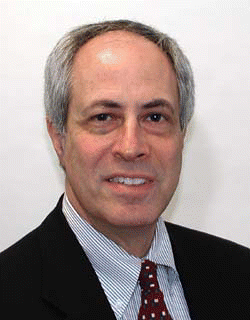In an ideal world, otolaryngologists would know ahead of time exactly why a pediatric patient was referred to their office. They would have a summary of the patient’s history, details of what the child’s primary care provider is specifically concerned about, a list of treatments that have been tried, and notes about any drug sensitivities.
Unfortunately, all too often, these sorts of details do not appear, and patients show up as pretty much the equivalent of a cold call. The otolaryngologist has to do his or her best to figure out what’s going on from the examination in the office and what the parents say.
This lack of information can contribute to making that first visit to the otolaryngologist inefficient, and can lead to misconceptions and erroneous decisions, said Kenneth M. Grundfast, MD, Professor of Otolaryngology at Boston University School of Medicine.
Parents sometimes are confused when an otolaryngologist recommends something they didn’t expect, or are asked for information they do not know or cannot recall.
For example, an otolaryngologist may want to know about the frequency with which ear infections have occurred, the rapidity of resolution of persistent middle ear fluid, or the frequency with which throat cultures have been positive for streptococcus bacteria, said Dr. Grundfast. Sometimes parents are caught in the middle of a disjointed discussion about steps in management of their child.
With many pediatric head and neck disorders, an important part of the decision-making process is the past medical history, not just the findings on the day of the visit to the otolaryngologist, he said.
Take the example of whether or not to insert tubes in the ears of a child. Here, it is important to know how many times acute ear infections have occurred.
If acute ear infections have occurred three times in three months, probably the child doesn’t need tubes. If infections have occurred five or six times in three months, though, then that might be a reason to insert tubes in the ears, Dr. Grundfast said.
If a child is referred for frequent sore throats, it depends on how many sore throats have occurred, what cultures have shown, and what the childs condition was at the time of each sore throat.
Some situations might need surgery, others don’t need surgery, Dr. Grundfast said. And these are big decisions. Yet, often patients arrive at the otolaryngologist’s office with little or no documentation of the relevant past medical history, and not all parents can give sufficient details.
It is Dr. Grundfast’s impression that children’s primary care providers tend to be very focused in what they expect to receive back in writing from a consultant. On the other hand, oftentimes, they don’t seem to feel an obligation to transfer sufficient information to the specialist. It’s a little lopsided, he said.
These sorts of problems are typical of what can occur when there is a lack of communication between generalists and specialists of any sort, said William Primack, MD, Professor of Pediatrics and Medicine at the University of North Carolina School of Medicine. He has studied the subject of pediatric generalist-specialist communication, and was coauthor with Christopher Stille, MD, from the University of Massachusetts Medical School, of a couple of studies on the topic that appeared in Pediatrics.
A lack of information can lead to redundancy if tests such as CT scans need to be repeated, and can result in a delayed or missed diagnosis, adverse drug reactions, and overall increased health care costs if the specialist doesn’t get the basic background information.

The problem is not uncommon, with communication barriers abounding between generalist and specialists of all types, Dr. Primack said. Various studies in the medical literature have looked at communication issues, but few have focused on the pediatric population.
Dr. Primack became interested in the subject after working in both generalist pediatrician and specialist (nephrology) capacities while at the Fallon Clinic and University of Massachusetts in Worcester. I realized there was a difference between perception and reality in terms of communication between specialists and generalists. Generalists thought they were communicating well. Specialists in general didn’t think primary care people were communicating well, he told ENToday.
One of the studies (published in 2003) consisted of a detailed survey about communication issues. A total of 412 pediatric generalists and specialists in New England responded. Results showed that 60% of generalists reported that there was frequent sending of information about initial referrals, whereas only 28% of specialists reported that they received communication from generalists.
In about 39% of cases, families were relied on for the main communication between providers. The authors noted that although it is important to include families when developing treatment plans, it is potentially hazardous for providers to rely on them as the primary conduit for complex information. The generalist’s role as the interpreter of information can be compromised, leaving families confused, and the potential for medical error is introduced.
In a more recent study, from 2006, by Dr. Primack and colleagues, specialists reported communication from referring generalists in only 50% of initial referrals, whereas primary care doctors reported communication from specialists after 84% of initial consultations.
Here, the authors stated, communication was strongly associated with physicians’ reported ability to provide optimal care. On the other hand, physicians in the study reported a preference for cotreatment of referred patients.
Findings also suggested that referring physicians may have more trouble when it comes to coordinating specialty care for children with complex needs-for instance, those needing referrals to more than one specialist. In some cases, parents might make additional specialist appointments (where referrals aren’t required) without telling their primary care doctor.
Communication Solutions
Being aware of what the barriers to communication are can help lead to solutions, said Dr. Primack.
In the 2003 study, problems commonly reported by specialists and generalists alike included delayed availability of providers by telephone, having to negotiate annoying automatic phone menus, and delays in transcription of dictation (only about 65% of both types of doctors noted this as a problem); about half of both sets of doctors reported trouble communicating directly with the patient’s attending physician.
Importantly, 82% of generalists reported they weren’t notified when multiple specialists came on board for their patient’s care, a problem noted by only 51% of specialists.
Doctors in the study agreed on a number of points that would facilitate communication. Key points highlighted by both generalists and specialists included a letter from the generalist to the specialist before the consultation visit; sending copies of letters to all providers involved in the care of the patient; and a phone call from the generalist to the specialist prior to the specialist consultation.
Dr. Grundfast pointed out that Medicare guidelines require details of reasons for referrals. Even though Medicare doesn’t apply to the pediatric population, it often sets the threshold for what is considered to be good practice, he said. It can be looked to as a model.
In the future, exchanging files electronically might provide the answer for some practices. Although this format is not yet in widespread use, nor is it standardized, some centers are trying out different systems.
At the Boston Medical Center, to initiate a consult in the electronic system you have to complete a little form on the screen that gives some basic information, Dr. Grundfast said.
In the Agency for Healthcare Quality and Research (AHQR) 0024 guidelines on the management of otitis media there is a section on generalist-specialist communication, Dr. Grundfast said. The guidelines outline what the generalist needs to give the otolaryngologist, as well as what sort of information the generalist needs back.
Tips for Improving Communication Between a Child’s Primary Care Provider and Specialist
This summary of key points is provided by Christopher Stille, MD, Associate Professor of Pediatrics at the University of Massachusetts Medical School, who has co-authored several studies on generalist-specialist communication.
From the generalist to the otolaryngologist:
- Information about the patient needs to arrive to the otolaryngologist before the patient does.
- Even a little information is better than none at all!
Information provided by the generalist should include:
- The generalist’s specific question
- A brief history of the illness or condition
- What has been tried so far
- Current medications, allergies
- Any special concerns from the parents’ perspective.
From the otolaryngologist back to the generalist/primary care provider:
Information should arrive within two weeks after the otolaryngology consult (if possible), so the pediatrician does not have to rely solely on the parents for information about the visit.
Information provided by the otolaryngologist should include:
- Answers to the primary care provider’s specific question
- Impressions, plan and the reasons behind them (a tiny bit of education goes a long way)
- What to expect and when to call the otolaryngologist
- Specific roles (if any): the otolaryngologist will do X and Y; and the primary care provider should do Z.
- Follow-up plans, or discharge back to primary care provider’s care.
Laryngoscope Highlights
Meta-Analysis of Open Versus Percutaneous Tracheostomy
Numerous studies have been undertaken to characterize differences in complications and cost-effectiveness between open and percutaneous tracheostomy. Kevin M. Higgins, MD, and Xerxes Punthakee, MD, performed a meta-analysis of 15 prospective, randomized, controlled trials to compare complication rates, cost-effectiveness, and procedure length between the two techniques.
The 15 studies in the meta-analysis included 973 patients, almost equally divided between those who had open and percutaneous tracheostomies. Pooled ORs showed statistically significant results against percutaneous tracheostomy for complications of decannulation/obstruction, but there were significantly fewer complications in the percutaneous group with respect to wound infection and unfavorable scarring. Overall complications also tended to favor the percutaneous technique, but results were not statistically significant. There was no significant difference between the two groups in the incidence of death.
Resource allocation in terms of terms of costs, time, and personnel involved for the two procedures all favored the percutaneous method-the procedure cost $460 less than the open technique, took almost five minutes less time, and involved one fewer individual-but this may be explained by the fact that trainees tend to favor the open technique, which would take a longer time and involve more personnel if it is performed by an individual with less experience.
The authors conclude from this meta-analysis that percutaneous tracheotomies trend toward fewer overall complications than open techniques and appear to be more cost-effective by releasing operating room resources including time and personnel, provide greater feasibility in terms of bedside capability, and allow nonsurgeons to safely perform the procedure.
(Laryngoscope 2007;117:447-54)
©2007 The Triological Society


Leave a Reply